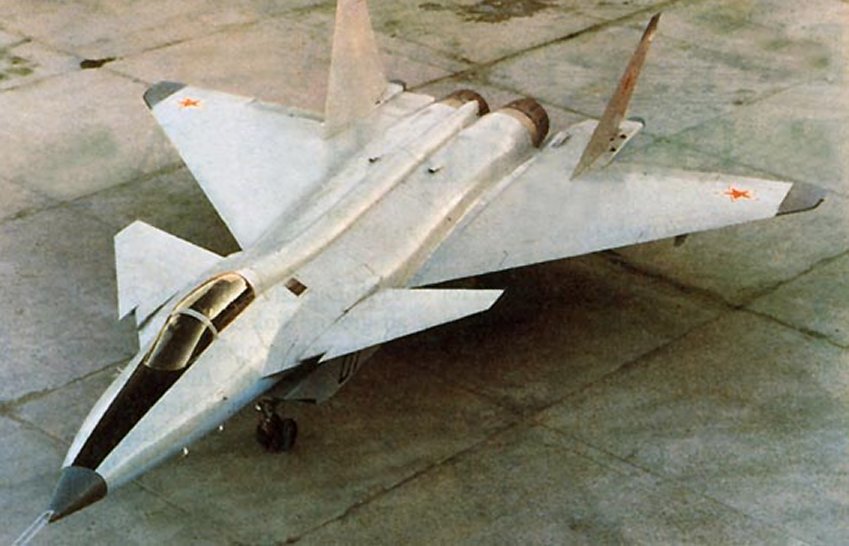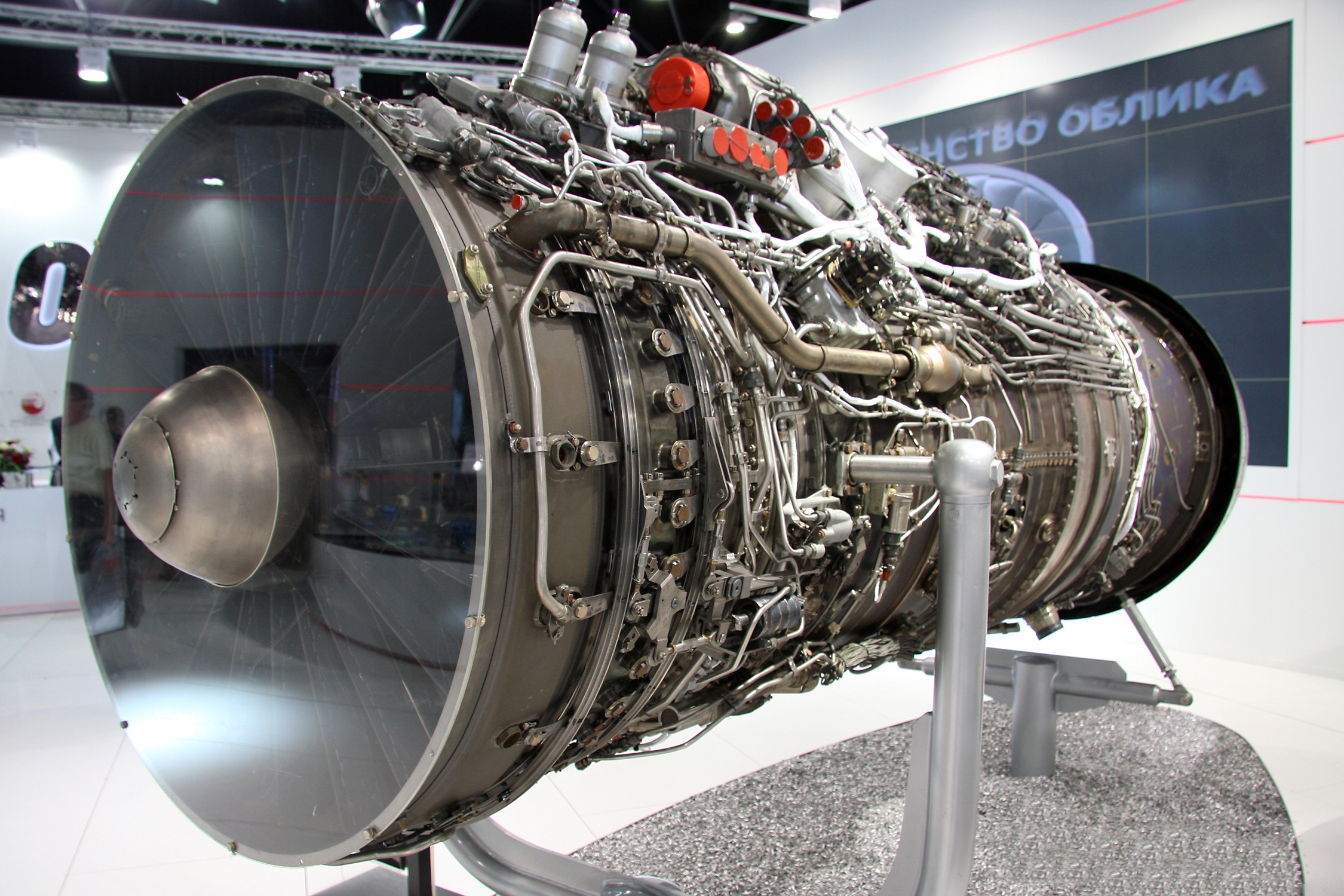The Mikoyan 1.44 (or MiG MFI) is a technology demonstrator developed by Mikoyan. It is the Soviet Union’s answer to the Advanced Tactical Fighter – F-22 Raptorof the US.In 1983 the MiG OKB began general parametric study of an MFI (Mnogofunktsionahl’nyi Frontovoi Istrebitel, multirole tactical fighter). This was to be a totally new aircraft as ahead of global competition as the MiG-29 had been. It was to be larger than the MiG-29, to serve as a successor to the long-range MiG-31 and MiG-31M interceptors, but also with the supermanoeuvrability needed for close combat and the ability to fly air-to-ground missions as well.
The MiG project staff eventually settled on two configurations, called Izdelye (product) 1.41 and 1.43. After prolonged discussion with the WS, features of both were combined in the 1.42.
The first flight article, designated 1.44, is a simplified technology demonstrator to prove the aerodynamics and flying qualities, performance and propulsion. Compared with the 1.42 it has an almost pure delta wing and a slightly different air inlet system, and lacks the radar, mission avionics and internal weapons bay. By 1991 the 1.44 was structurally complete, but was awaiting flight-cleared engines, the agregat (accessory gearbox) and several other components.
The 1.44 is an extremely large single-seater, designed to fly significantly faster than any aircraft it might encounter. Each wing is an almost pure cropped delta with a thickness chord ratio of about 3.5 per cent and leadingedge angle of about 48° (50° over the innermost section). On the leading edge are almost full-span hinged flaps, while on the trailing edge are large inboard and outboard flaperons driven by power units in underwing fairings.
Unlike the MiG-29, the wing is not blended into the fuselage, nor does it have a LERX (leading-edge root extension). As far forward as possible without interfering with pilot view are enormous canard foreplanes, driven over a large angular range. Each has a sharp dogtooth, and a second smaller dogtooth due to the fact that these are 1.42 canards which do not perfectly match the large bulging fixed roots of the 1.44. Like the MiG29 a structural beam projects behind each wing to carry the outward-sloping upper fins, but these beams are much further apart. Thus, there is now a wide space between the beam and the adjacent engine, and in this is placed a secondary elevator, driven by a powerful actuator in a projecting fairing. Each fin has an inset rudder, and under the beams are vertical underpins with powered rudders.
The basic aircraft is designed to be longitudinally unstable and to fight at alphas (angles of attack) up to at least 100°, which explains the unprecedented 16 flight-control surfaces. These are needed because, unlike the F-22 the basic aircraft is designed for close air combat. At high alphas powerful lift is generated by the canards and by the flat nose and huge flat underside of the fuselage. Absence of LERXs means that, instead of there being an inlet under each wing, there is a single giant rectangular inlet a considerable distance below the forward fuselage. In view of the high design Mach number, the upper wall is fully variable, the sides are cut sharply back in side view, and the lower lip hinges down in high-alpha flight. The ducts diverge immediately to pass the nose gear, and then rise over the weapons bay (in this prototype occupied by instrumentation). The faces of the engines cannot be seen externally.
The Saturn AL-41F augmented turbofans are quite close together. Prototype engines were made available because, unlike the S-37, the Mikoyan aircraft is the official choice as the next-generation fighter. Dry and maximum ratings are approximately 12,000kg (26,455 Ib) and 20,000kg (44,090 Ib). This engine was designed for ‘the new tactical fighters of the 1990s’. T/W ratio of the clean aircraft is no less than about 1.33. The nozzles are circular, with petals giving a variable convergent/divergent profile, their inner faces being coated with a tan-coloured ceramic. Each nozzle can be vectored over limits of ±15° vertically and ±8° horizontally. In the nose is a forked pair of pilot tubes. The canopy swings up and back on four parallel arms. Above the huge wing the fuselage has visible waisting, and the broad but shallow central spine terminate s in a capaciou s bay for a braking parachute. The landing gears all have levered trailing-link suspension, the single-wheel main units swinging forward into compartment s beside the ‘weapon s bay’ and the steerable twin-wheel nose unit retracting backwards to lie between the ducts. There is no problem with nosewheel slush entering the ducts, the height of the landing gears being dictated by landing attitude.
Though Blue 01 (first prototype) has the full Avionika KSU-I-42 digital control system, which interlinks all the flight controls and engine nozzles, it does not have the intended Fazotron N-014 (beetle) multimode radar nor the aft-facing radar and countermeasures which in the 1.42 would occupy the two tailcones. In an armed aircraft provision would be made for a heavy load of weapons internally and on wing pylons and also for a 30mm gun. Dielectric flush antennas face in all directions, though in the 1.44 many are empty. The 1.44 lacks a RAM (radar-absorbent material) coating, but Mikoyan claim the RCS (radar cross-section) of the MFI would be ‘similar to that of the smaller F-22′.
Had the MFI progressed according to its original schedule it could well have been, if not a world-beater, at least a formidable rival to the much “slower” F-22 Raptor. As it is, unless ANPK MiG can find a rich foreign partner, it could gradually be overtaken by foreign competitors. In any case, the days when MiGs sold partly because of their low price are over. Several analysts consider that a production MFI would have to be priced at not less than US$100 million.



.jpg)